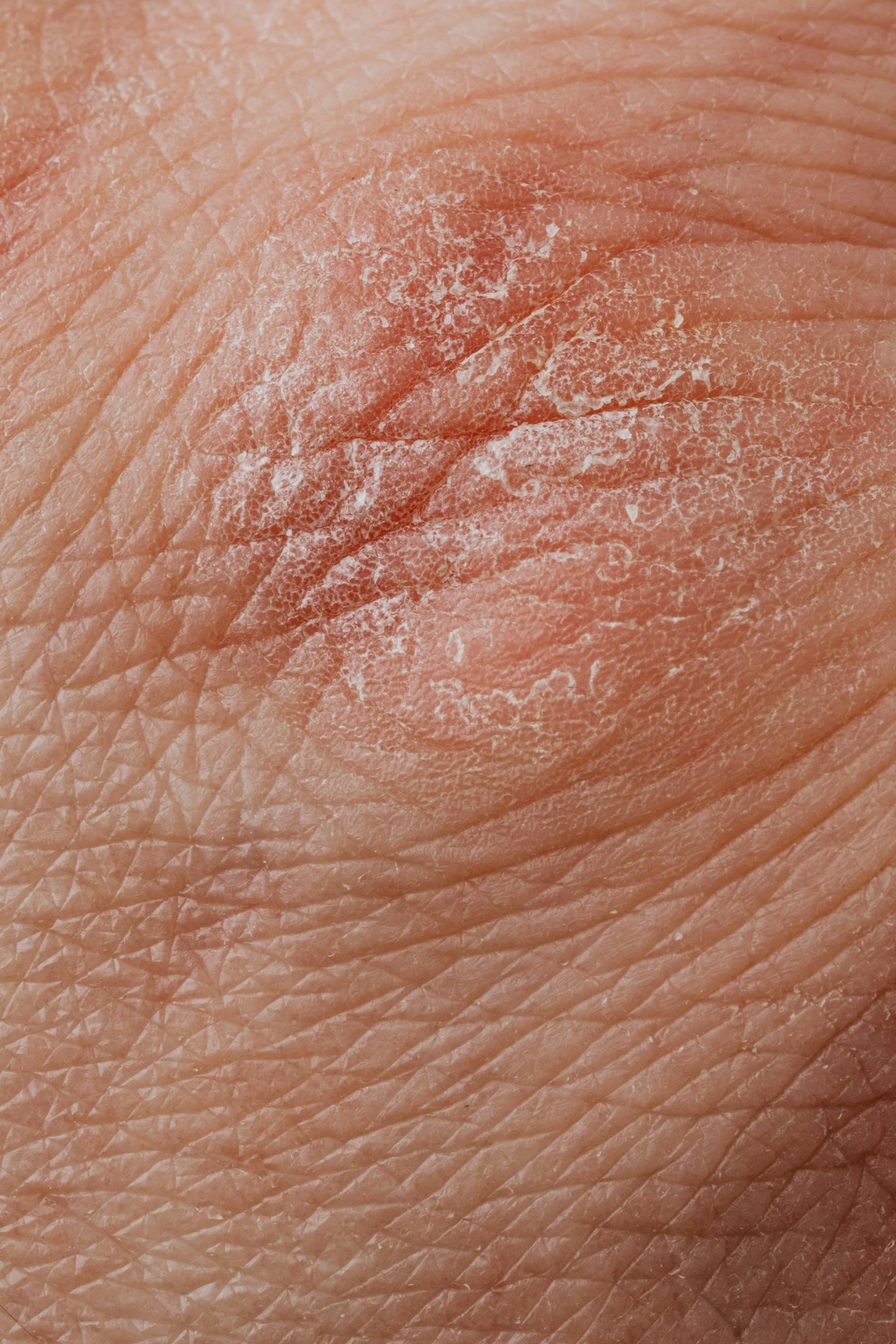Today, we’re diving into a topic that’s not often discussed but is incredibly important: the connection between recurrent skin infections and diabetes. If you or someone you know has faced the challenge of frequent skin infections, it’s essential to understand how this might relate to diabetes. So, grab a cup of tea, and let’s explore this connection step by step.
WHAT ARE SKIN INFECTIONS?
First things first, let’s talk about what we mean when we say “skin infections.” These infections can arise from bacteria, viruses, or fungi and typically show up as redness, swelling, warmth, or pus-filled bumps on the skin. Common types include cellulitis, folliculitis, and fungal infections like athlete’s foot. Simply put, a small scratch that turns red and swollen instead of healing is a classic example many of us can relate to.
Now, here’s the key point: when these infections happen repeatedly, it’s more than just a nuisance it’s a signal that something deeper may be going on.
RECURRENT SKIN INFECTIONS: WHAT’S GOING ON?
So, why do some people get skin infections more often than others? The answer isn’t always straightforward. Several factors can play a role, including a weakened immune system, certain skin conditions, poor hygiene, and most importantly chronic conditions like diabetes.
THE IMMUNE SYSTEM CONNECTION
When we talk about diabetes, most people think about blood sugar control. But there’s more to the story. High blood sugar can weaken the immune system, making it harder for the body to fight infections and repair tissue. Over time, it can also damage nerves and reduce blood circulation, which slows healing.
This means that even a small cut or scratch may take longer to heal, creating the perfect entry point for bacteria. That’s why skin infections in diabetes often become frequent and stubborn.
SCIENTIFIC EVIDENCE SUPPORTS THIS LINK
A 2018 matched-cohort study in BMC Infectious Diseases found that people with diabetes had about 66% higher odds of developing skin and soft-tissue infections compared to those without diabetes.
Another Dutch prospective study showed that diabetic patients faced a significantly greater risk of recurrent bacterial and fungal skin infections over a 12-month period.
These findings make it clear: good blood sugar control is essential for strong immunity and healthy skin.
A REAL-LIFE INSIGHT FROM THE PHARMACY COUNTER
To bring this into real life, let me share an example. As a pharmacist, I once met a patient who was struggling with stubborn dry skin. Despite receiving long-term treatment from a reputable dermatology clinic, the condition refused to improve. After further evaluation, it turned out the underlying problem was undiagnosed diabetes. This experience is a powerful reminder that when skin problems don’t heal as expected, healthcare providers especially dermatologists should consider testing for diabetes.
SKIN INFECTIONS AS AN INDICATOR OF DIABETES
This leads us to an important takeaway. Recurrent skin infections can sometimes serve as an early warning sign of diabetes. In other words, the skin may be telling you something your blood sugar levels haven’t yet revealed.
If someone keeps getting infections, doctors may run blood tests to check for diabetes. Unfortunately, the cycle can be frustrating: high blood sugar increases the risk of infections, and those infections can, in turn, make blood sugar harder to control.
RISK FACTORS TO CONSIDER
Now that we understand the connection, let’s look at the specific risk factors that make skin infections and diabetes more likely to appear together.
1. Poor Blood Sugar Control
Uncontrolled blood sugar weakens the immune system. Frequent spikes not only increase infection risk but also lead to complications over time.
2. Obesity
Being overweight promotes inflammation and insulin resistance, both of which increase the chance of type 2 diabetes.
On top of that, skin folds in overweight individuals create a warm, moist environment where bacteria and fungi thrive.
3. Neuropathy and Poor Circulation
Diabetes can also cause nerve damage and restrict blood flow, especially in the feet and legs. When circulation slows, the body struggles to deliver immune cells and nutrients needed for healing.
4. Skin Conditions
Certain skin conditions such as eczema or psoriasis can break down the skin barrier, making infections easier to catch. When diabetes is added to the mix, the risk rises even more.
RECOGNIZING THE SYMPTOMS
At this point, you may wonder how to tell if you’re dealing with a skin infection. Watch for these common warning signs:
• Redness and Swelling: Infected areas become noticeably red and swollen.
• Pain or Tenderness: The skin feels sore or sensitive to touch.
• Pus or Drainage: Any discharge from a wound is a strong sign of infection.
• Fever: Sometimes the body responds with a fever, signaling a more serious infection.
If you notice any of these symptoms, don’t delay see a healthcare provider right away. Early treatment prevents complications and speeds up healing.
PREVENTING SKIN INFECTIONS IN DIABETIC PATIENTS
The good news is that you can take practical steps to protect your skin and lower the risk of infections, especially if you have diabetes.
1. Maintain Good Hygiene – Regular handwashing and keeping skin clean and dry are simple but powerful habits. Dry thoroughly, especially in skin folds.
2. Monitor Blood Sugar Levels – Checking and managing blood sugar with the help of your healthcare team is one of the best ways to prevent infections.
3. Adopt Healthy Lifestyle Choices – A balanced diet, regular exercise, and good hydration all support skin health and blood sugar control.
4. Protect Your Skin – Treat even small cuts carefully. Clean, cover, and monitor them until fully healed.
5. Schedule Regular Check-ups – Routine medical visits help catch problems early and keep both diabetes and skin health in check.
CONSULT A HEALTHCARE PROFESSIONAL
If you’re experiencing recurrent skin infections, don’t ignore it. A healthcare professional can evaluate the problem, provide treatment, and check whether diabetes or another condition is involved. Early detection and care can prevent more serious complications.
CONCLUSION
Understanding the link between recurrent skin infections and diabetes is crucial for anyone who values their health. While skin infections can be a sign of diabetes, they can also make diabetes harder to manage, creating a cycle that’s best broken early.
By staying informed, maintaining good hygiene, and keeping blood sugar under control, you can greatly reduce your risk. Your skin often reflects what’s happening inside your body, so listen to it and act promptly.
Awareness and education are the first steps toward protecting not only your skin but your overall well-being. If you notice persistent skin issues, seek medical advice—because catching diabetes early can make all the difference.
FAQs
1. Can recurrently skin infections be the first sign of diabetes?
Yes. Frequent or slow-healing skin infections can sometimes be an early indicator of diabetes, especially if accompanied by symptoms like excessive thirst, frequent urination, or unexplained fatigue.
2. What types of skin infections are most common in people with diabetes?
Bacterial infections such as cellulitis, fungal infections like athlete’s foot or yeast infections, and recurrent boils (furuncles) are frequently reported in diabetic patients.
3. How can blood sugar control reduce the risk of infections?
Keeping blood glucose within the target range strengthens the immune system and improves circulation, helping the body heal wounds faster and fight infections more effectively.
DISCLAIMER
This article is for educational purposes only and is not a substitute for professional medical advice, diagnosis, or treatment. Always consult a qualified healthcare provider if you suspect diabetes or experience recurrent skin infections.
CALL TO ACTION
Your skin might be sending you important health signals. If you notice frequent or stubborn skin infections, schedule a check-up with your healthcare provider and request a diabetes screening. Early detection and proper management can make a life-changing difference.
REFERENCES
• Chen J, et al. Diabetes mellitus and risk of skin and soft tissue infections: A matched cohort study. BMC Infectious Diseases. 2018;18(1):93. doi:10.1186/s12879-018-2999-2
• Muller LM, et al. Increased risk of common infections in patients with type 1 and type 2 diabetes mellitus. Clinical Infectious Diseases. 2005;41(3):281–288. doi:10.1086/431587




